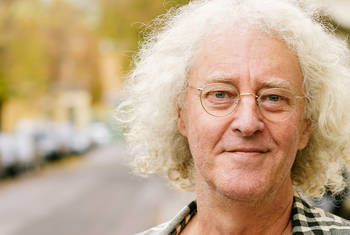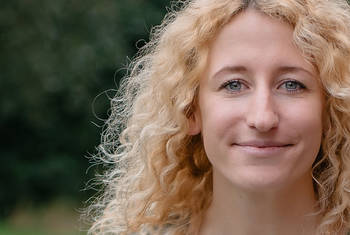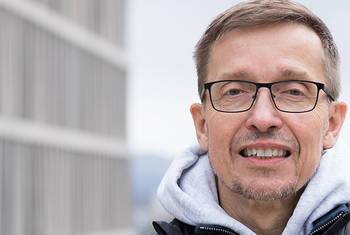Olivier N. Lemaire How Can Acetogenic Bacteria Process Carbon Monoxide?
Olivier Lemaire is a postdoctoral researcher in the Microbial Metabolism Research Group at the Max Planck Institute for Marine Microbiology in Bremen. He completed both his masters and his PhD at Aix-Marseille University. He has also conducted research at the CNRS, Marseille. Lemaire’s main research interests include ecology, evolution, life and its origins and exobiology. Drawn on in the research presented here, Lemaire also has specialist knowledge of prokaryotic species enrichment/cultivation and protein crystallization and analysis.
Area of Research
Microbiology
since 2019
Post-Doctoral Researcher
Max Planck Institute for Marine Microbiology (more details)
Microbial Metabolism Research Group
2014-2018
Ph.D. Student
French National Center for Scientific Research (Centre national de la recherche scientifique)
Laboratory «Bioénergétique et Ingénierie des Protéines» (BIP)
2014
Research Assistant
French National Center for Scientific Research (Centre national de la recherche scientifique)
BIP laboratory, Characterization of TorE, a novel component of Tor respiratory system from Shewanella oneidensis
2013
Research Assistant
French National Center for Scientific Research (Centre national de la recherche scientifique)
«Laboratoire de Chimie Bactérienne», Study of FdhD, specific chaperon of the formate dehydrogenase FdhF in Escherichia coli.
2018
Ph.D. in Microbiology
Aix-Marseille University (AMU), France
2014
Master of Microbiology and Biotechnologies
Aix-Marseille University (AMU), France, summa cum laude
2012
Bachelor of Cellular Biology
Aix-Marseille University (AMU), France, magna cum laude

Max Planck Institute for Marine Microbiology
BremenAt the Max Planck Institute for Marine Microbiology (MPIMM), we are investigating microorganisms in the sea and other waters. What role do they play, what are their characteristics and how great is their biodiversity? What is the contribution of microorganisms to the global cycles of carbon, nitrogen, sulfur and iron? What does this mean for our environment and our climate? These and many other questions will be answered by researchers from around the world, engineers, technicians and numerous others at the MPIMM. Their fields of expertise range from microbiology to microsensors, geochemistry to genome analysis and molecular ecology to modelling.
The MPIMM was founded in 1992 and is part of the Max Planck Society (MPG). Since 2002, the MPIMM has been running the International Max Planck Research School of Marine Microbiology (MarMic), a program for highly qualified master students and graduates of our institute and the Bremen Research Alliance partner Bremen University, Alfred Wegener Institute Helmholtz Center for Polar and Marine Research (AWI) and Jacobs University.
Department
Max Planck Research Group Microbial Metabolism
Some microbes, called methanogens, have the ability to produce methane, a greenhouse gas as well as a potent biofuel. Methanogens do not breathe oxygen. Instead, they derive all their energy from methane production through a process called methanogenesis, which provides 60 times less chemical energy (ATP) than oxygen respiration. Since methanogenesis is completely deactivated in presence of oxygen, these microorganisms are constrained to live in anaerobic environment with an extreme restriction of chemical energy.
However, methanogenesis is an extremely efficient process and the different chemical reactions involved in methane generation have been optimized during billions of years of evolution. More interestingly, some of the methanogens are complete chemoautotrophs: they have to build all their elementary bricks (DNA, RNA, protein, lipids, vitamins…) only from minerals and gases. With all these particularities, the study of methanogens is an open door to the past and future: they could have been one of the first life forms on our planet because of their “chemoautotrophic ancient metabolism” and nowadays, they could be used for new biotechnologies to efficiently capture carbon dioxide and produce methane.
The Microbial Metabolism Group aims to understand, at the molecular level, how methanogens are surviving and growing in extreme environments. How do they generate methane from different sources of carbon so efficiently? How do they convert minerals into the elementary bricks of life? And how do they protect themselves against stresses from their natural environment?
Map
When bacteria are used to reduce industrial CO2 emissions via biological gas conversion, the presence of carbon monoxide (CO) causes problems because it is toxic to nearly all organisms. In this video, OLIVIER LEMAIRE explains how a subgroup of acetogenic bacteria directly uses CO to produce acetate. Lemaire analyzes Clostridium autoethanogenum and identifies two key proteins, (CO dehydrogenase and acetyl-CoA synthase) that operate in tandem to enable CO conversion and acetate production. In fact, the organism’s metabolism is shown to be organized around this key process: CO consumption by CO dehydrogenase. Enhanced understanding of these processes will allow us to enhance methods already applied for greenhouse gas reduction but also for green energy production.
LT Video Publication DOI: https://doi.org/10.21036/LTPUB10948
Gas Channel Rerouting in a Primordial Enzyme: Structural Insights of the Carbon-Monoxide Dehydrogenase/Acetyl-CoA Synthase Complex from the Acetogen Clostridium Autoethanogenum
- Olivier N. Lemaire and Tristan Wagner
- Biochimica et Biophysica Acta (BBA)-Bioenergetics
- Published in 2021









